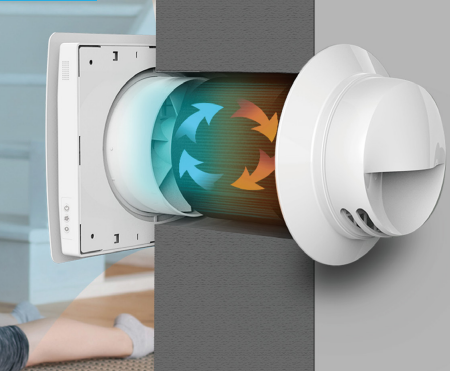Myths About HRV That Homeowners Should Know
The All-Inclusive Overview to the Uses of Heat Recovery Ventilation in Modern Buildings
Heat Recovery Ventilation (HRV) systems stand for a considerable development in constructing innovation (HRV Heat Recovery Ventilation). They provide an approach for exchanging stale interior air with fresh outdoor air while decreasing energy loss. This approach not just enhances interior air quality however also contributes to power effectiveness in both residential and industrial structures. Comprehending the numerous applications and benefits of HRV can reveal its important function in modern style and sustainability initiatives. The implications of this modern technology are worth checking out better
Understanding Heat Recovery Ventilation Equipments

Although numerous contemporary structures prioritize energy effectiveness, recognizing heat recuperation air flow (HRV) systems is essential for optimizing indoor air top quality and reducing energy consumption. HRV systems function by moving warmth from stagnant interior air to inbound fresh air, effectively maintaining comfortable interior temperature levels while lessening power loss. These systems contain a warmth exchanger, followers, and ductwork that facilitate the blood circulation of air. Throughout winter, HRV devices catch and reuse warm from the outward bound air, while in summer, they can assist cool down inbound air. By continuously trading air, HRV systems additionally reduce moisture and the concentration of indoor pollutants. Appropriate setup and upkeep of HRV systems are crucial for their efficiency and performance in enhancing overall structure efficiency and convenience.
Advantages of Heat Recovery Ventilation
Heat recovery ventilation systems use many advantages that improve both energy efficiency and interior air quality in modern buildings. By capturing and recycling energy from exhaust air, these systems significantly decrease heating & cooling expenses, leading to lower energy usage. They keep a steady circulation of fresh outside air, decreasing the danger of interior air toxins and allergens. This continuous exchange assists manage humidity levels, stopping mold and mildew development and making sure a healthier living atmosphere. In addition, HRV systems add to sustainability goals by lowering total carbon footprints. Their ability to optimize air flow without compromising thermal convenience makes them a beneficial enhancement to contemporary structure layout, advertising both financial and eco-friendly advantages.
Applications of HRV in Residential Buildings
As homeowners significantly prioritize power performance and interior air quality, the applications of heat recuperation ventilation (HRV) systems in domestic buildings have become much more widespread. HRV systems are particularly valuable in tightly sealed homes, where preserving fresh air blood circulation is crucial for protecting against wetness buildup and indoor click here for more pollutants. They efficiently move heat from outward bound stale air to incoming fresh air, lowering energy expenses connected with heating and air conditioning. Additionally, HRVs can improve convenience levels by managing moisture and temperature level. They are also adaptable for different household layouts, including single-family homes and multi-unit structures. Overall, incorporating HRV systems supports lasting living methods while guaranteeing a healthier interior environment for passengers.
HRV in Business and Industrial Settings
In industrial and commercial setups, the implementation of warmth healing ventilation (HRV) systems has come to be progressively crucial for optimizing power efficiency and maintaining air quality. These systems properly move heat from exhaust air to incoming fresh air, reducing the demand for extra heating or cooling. This not only lowers power costs however likewise adds to sustainability initiatives. Industries such as manufacturing, warehousing, and office buildings profit considerably from HRV systems, as they assist control temperature level and moisture degrees, making certain a comfortable and productive atmosphere. Additionally, HRV systems aid in removing contaminants and excess wetness, enhancing interior air high quality. As guidelines around air top quality end up being more stringent, the adoption of HRV modern technology is most likely to expand, making it an important element of modern-day business and commercial framework.
Future Patterns in Heat Recovery Ventilation Innovation

Frequently Asked Concerns
Just How Does Heat Recovery Ventilation Impact Indoor Air High Quality?
Heat recovery ventilation considerably boosts interior air top quality by continuously trading stale interior air with fresh exterior air while recuperating energy. This process lowers contaminants, preserves ideal humidity levels, and assures a healthier environment for owners.
Can HRV Systems Be Mounted in Existing Structures?
HRV systems can indeed be set up in existing buildings. Retrofitting may require adjustments to ductwork and air flow designs, yet it significantly enhances power efficiency and interior air top quality, making it a practical option for older structures.
What Maintenance Is Required for HRV Equipments?

Exist Particular Climates Where HRV Is Extra Effective?
Heat recovery ventilation systems are especially reliable in environments with considerable temperature level distinctions in between seasons. These systems maximize energy performance by recuperating warm from exhaust air, making them optimal for both cool and moderately cozy settings.
Just How Do HRV Systems Affect Power Costs?
